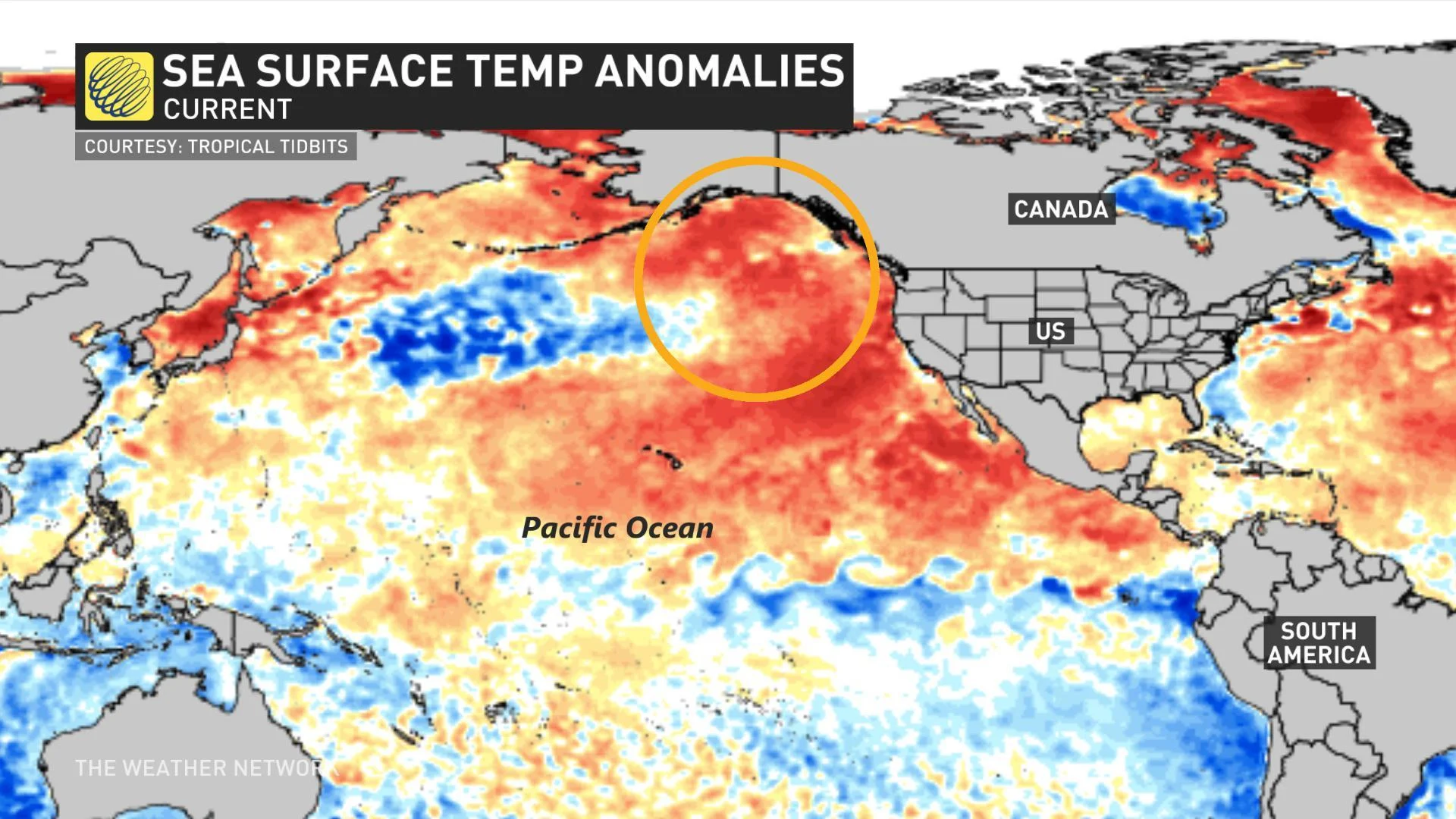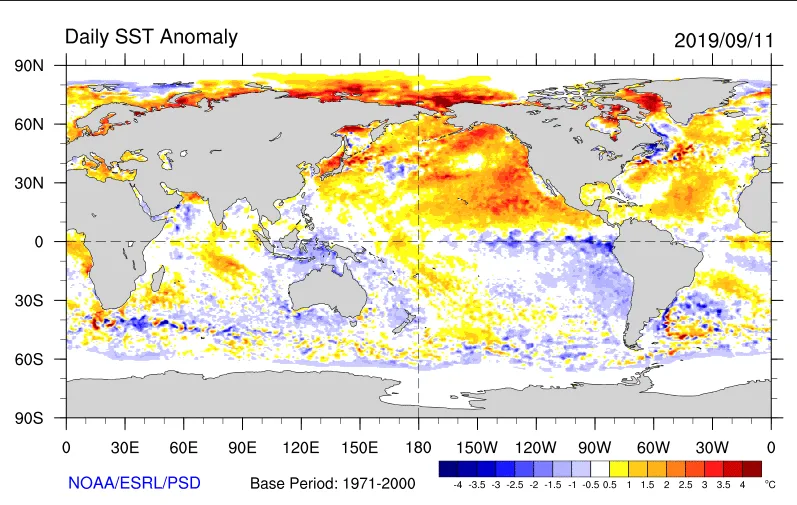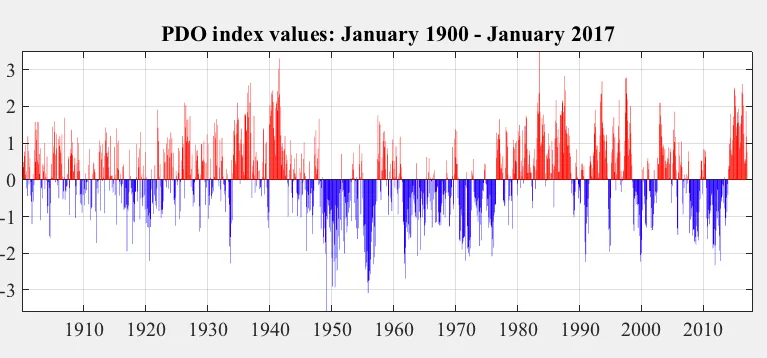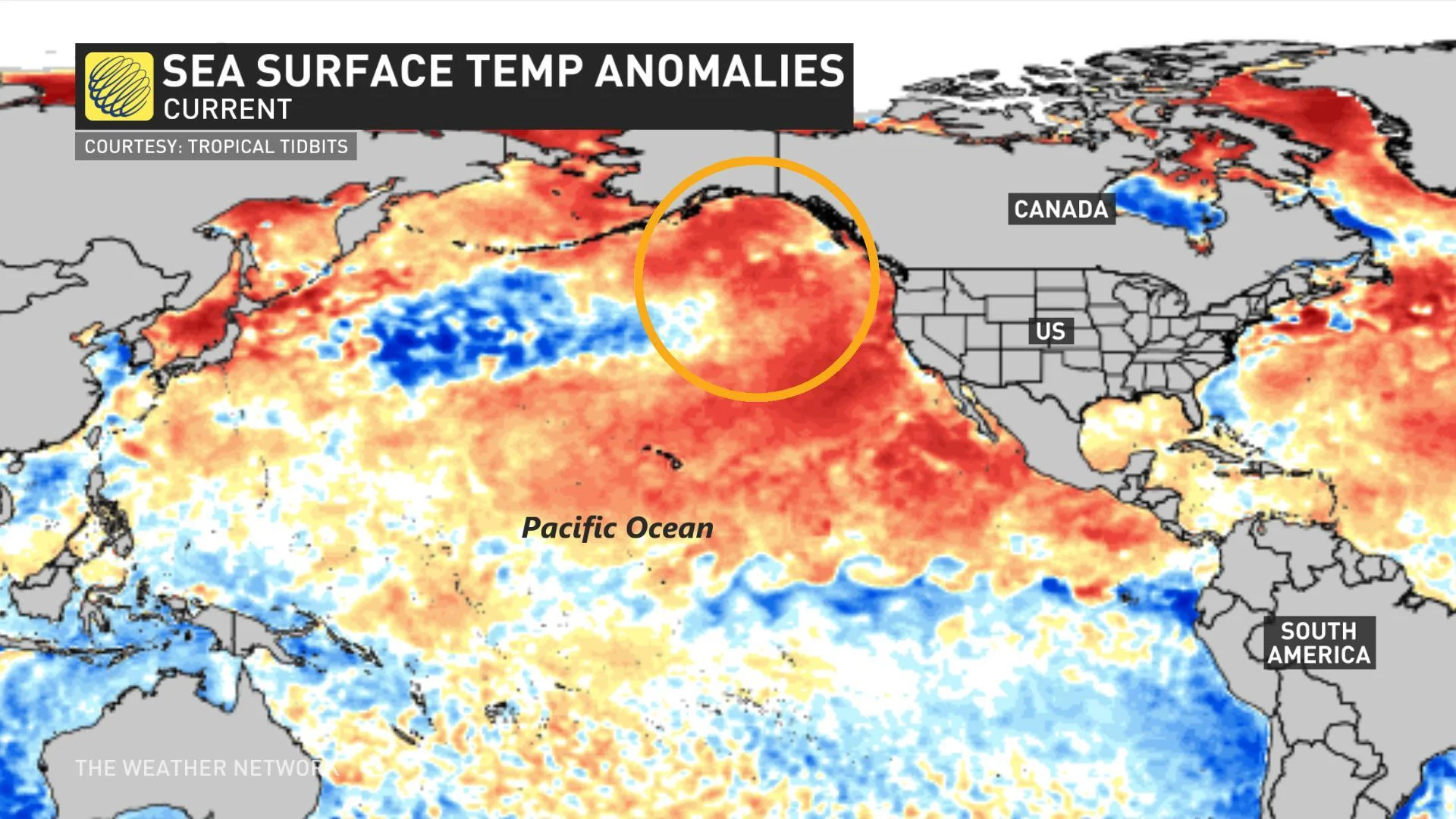
The 'blob' is back: Here's how it could impact fall weather
An unusually large patch of warmer-than-average water called "the blob" has been growing over the past few months across much of the northern Pacific.
A similar pattern occurred between 2014 and 2015, with significant weather impacts across North America.
This year, a swath of warmer-than-average water stretches from Alaska, where it began forming in June, all the way south to Baja California, Mexico.
We have seen sea surface temperature (SST) anomaly patterns similar to this in the past, but the National Oceanic and Atmospheric Administration (NOAA) has now confirmed that the 2019 blob is the second largest in forty years.

Despite not being as intense as the famous 2015 blob, which disrupted marine life and weather, there is still time for it to grow in size and become even warmer.
The last time a huge marine heatwave took over the north Pacific, it had a major impact on marine life and commercial fishing. Warmer waters reduce the nutritious food that juvenile salmon need in their journey from rivers into the ocean, limiting their chance of survival.
Another cause for alarm among scientists is the potential for massive toxic algae blooms, which crippled commercial fisheries along the entire West Coast in 2015.
The blob is a complex manifestation of the atmosphere-ocean interaction system in which energy exchange behaves anomalously. NOAA scientists have found that warmer-than-usual water is mainly driven by a persistent high-pressure ridge dominating the region.
This weather pattern keeps winds calm and comes with greater solar insolation values that add additional heat to the surface of the ocean. With weaker winds pushing the water, less mixing takes place, reducing upwelling of deeper cooler waters, especially near coastal areas.
So it´s not so much that the water is heating up. The lack of mixing is the main mechanism keeping the ocean upper layer from cooling down, as it should.
Some theories, however, state that the reason behind the sudden warming might be related to the so-called Pacific Decadal Oscillation (PDO).

The PDO occurs when the surface waters of the mid-latitude Pacific Ocean flip from a cold to a warm phase, normally in periods of years to decades.
During a warm PDO, the west Pacific is cooler while part of the eastern Pacific warms. The opposite occurs during the cold phase of the PDO. Scientists say we entered a cold PDO in the late 1990s, and now, the ongoing blob results from the onset of a warm phase of the PDO.
Back in 2015, the Blob saw positive temperature anomalies of 3.9°C. This year, sea surface temperatures are already 2.7°C above average along with some coastal areas of Washington state.
NOAA scientists monitoring ocean temperatures, expect this value to rise during the coming months, and this would potentially have a great impact on marine life and fisheries across the region.

THE BLOB AND NORTH AMERICAN WEATHER
Each blob can have a different impact on weather patterns.
For instance, the 2014-15 Pacific blob had a teleconnection with the developing El Niño in the equatorial Pacific. Changes in weather detected across North America that year was most likely El Niño driven rather than by the blob itself.
This year's blob comes without El Niño, so atmospheric patterns across the continent may not be the same as those observed in 2014-15.
NOAA scientist, Mike Halpert, believes that the blob doesn´t have a major impact on the weather beyond the first couple hundred miles from the western North America coast.
The 2015 blob was blamed by many for bringing drought to the west coast of North America and heavy snow to the east coast. This fall and winter, we could see a repeat of that situation, although according to Halpert, this hypothesis is questionable.
Beyond weather, marine life is also greatly impacted when warmer-than-usual waters take over such a large volume of the ocean. The last time the blob was in full force, the northwest coast of North America was heavily impacted.
Along the southern coast of Alaska more than 100 million Pacific cod where lost. Thousands of seabirds were found washed up on the shore and close to half a million died.
In one year alone, populations of humpback whales dropped by 30 per cent. Salmon, sea lions, krill, and other marine species disappeared in large numbers, mainly affected by extensive blooms of toxic algae.
Be sure to check back on theweathernetwork.com on Monday, September 16, for the official 2019 Fall Forecast and winter sneak peek!
